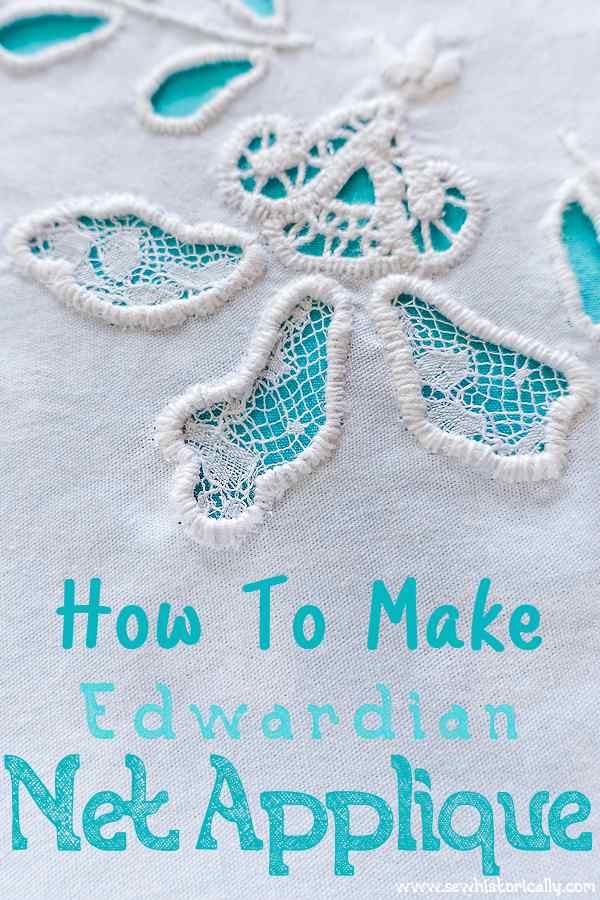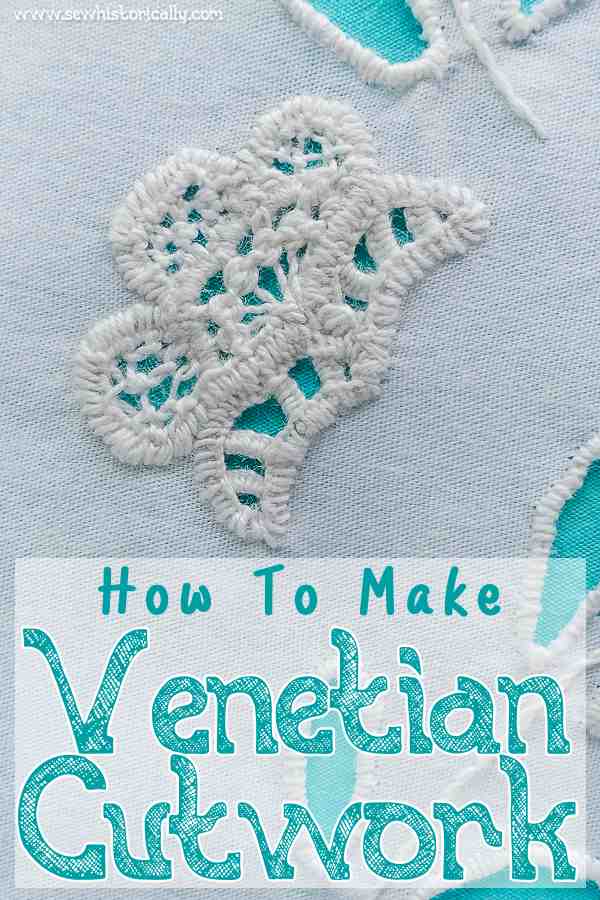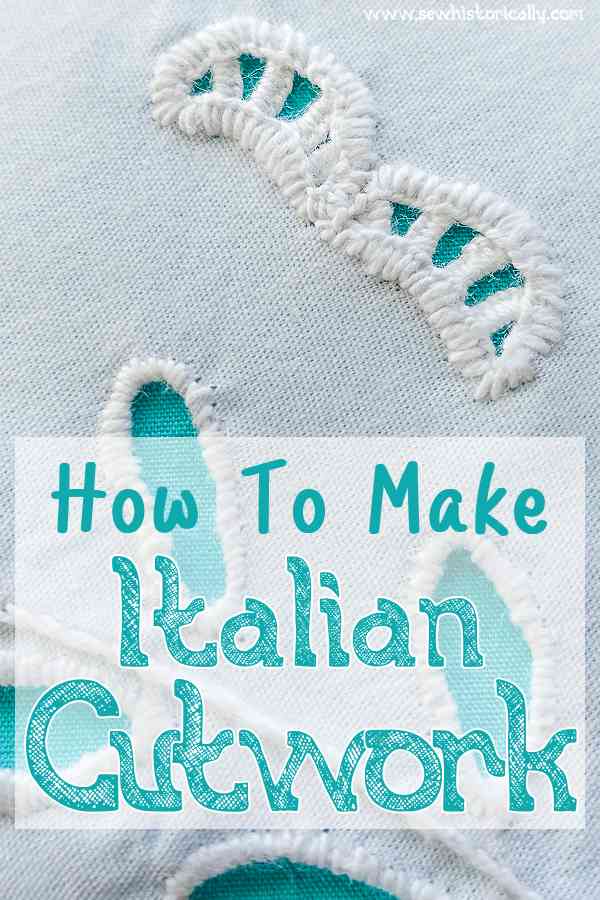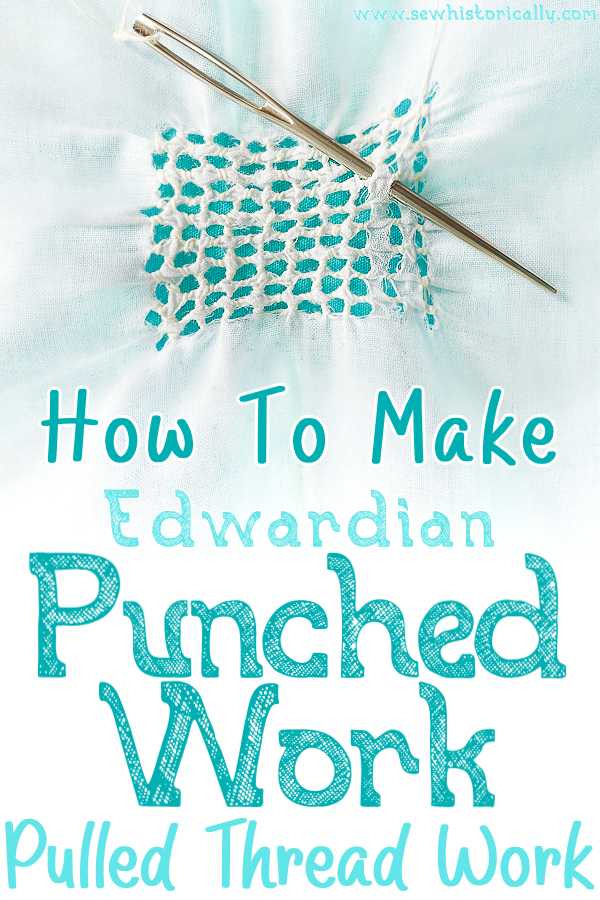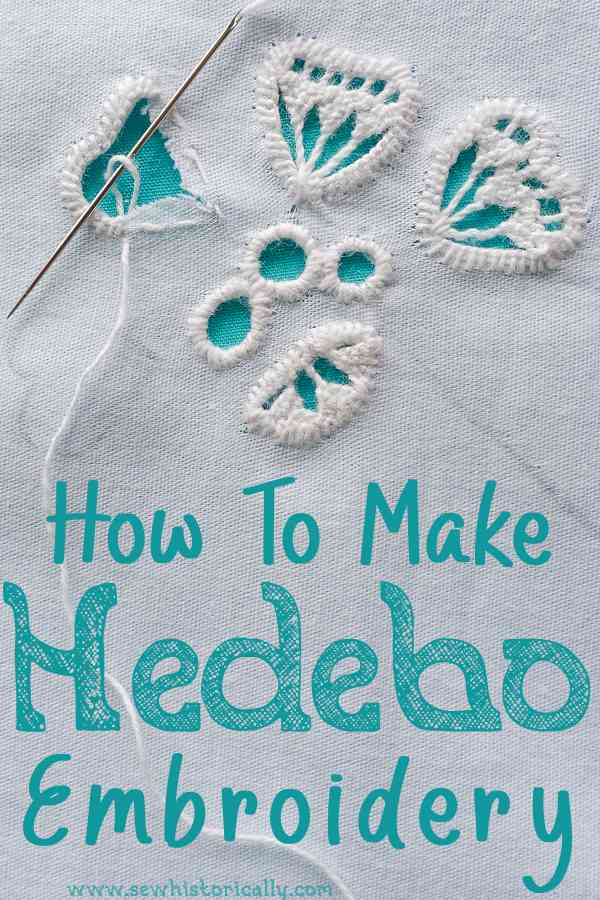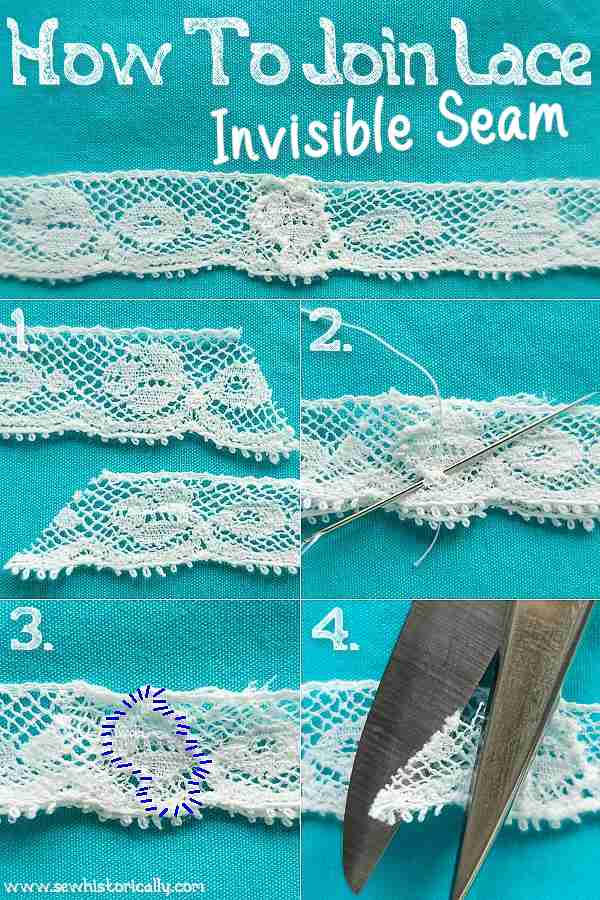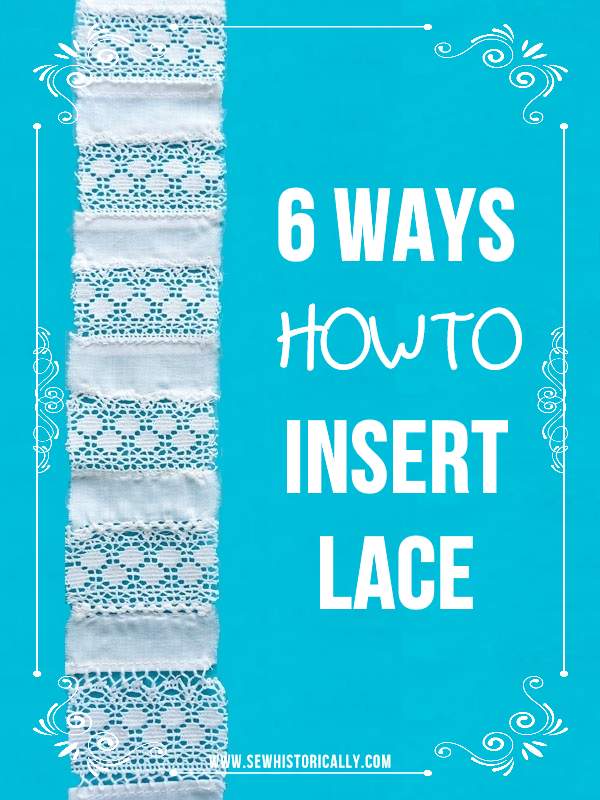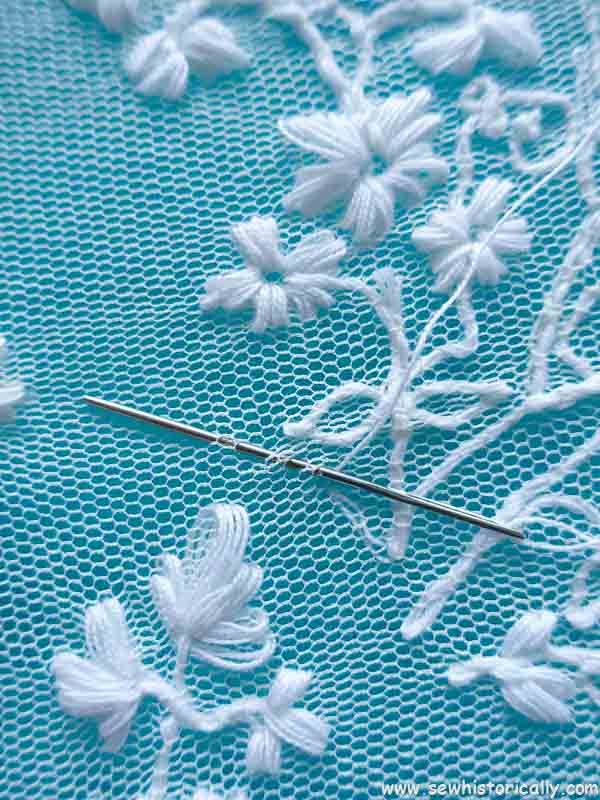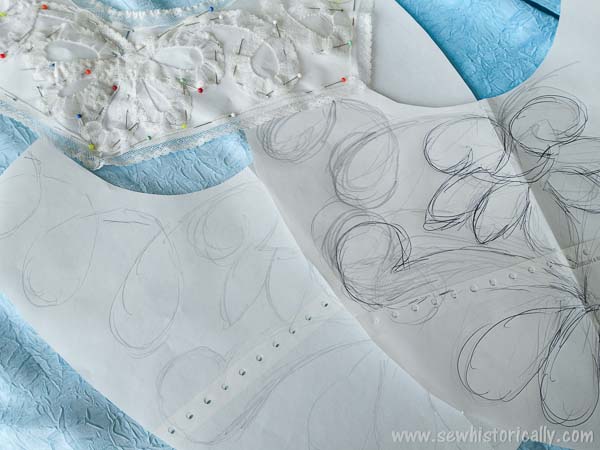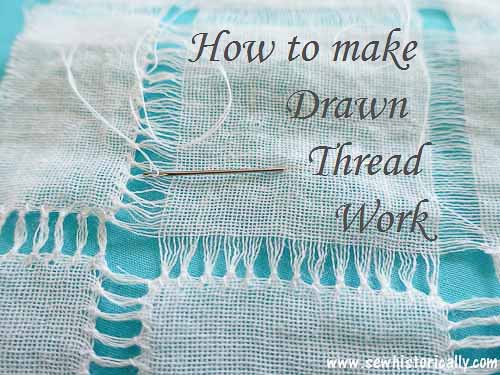Net applique, with cotton bobbinet tulle or cotton Valenciennes lace, was very popular in the Edwardian era. In the 1900s, it was used to embellish clothing, especially underwear.
To make Edwardian net applique, you baste a piece of cotton tulle or lace to fabric, cut the fabric away behind the net and then attach the net with satin or other embroidery stitches. Continue reading How To Make Edwardian Net Applique
